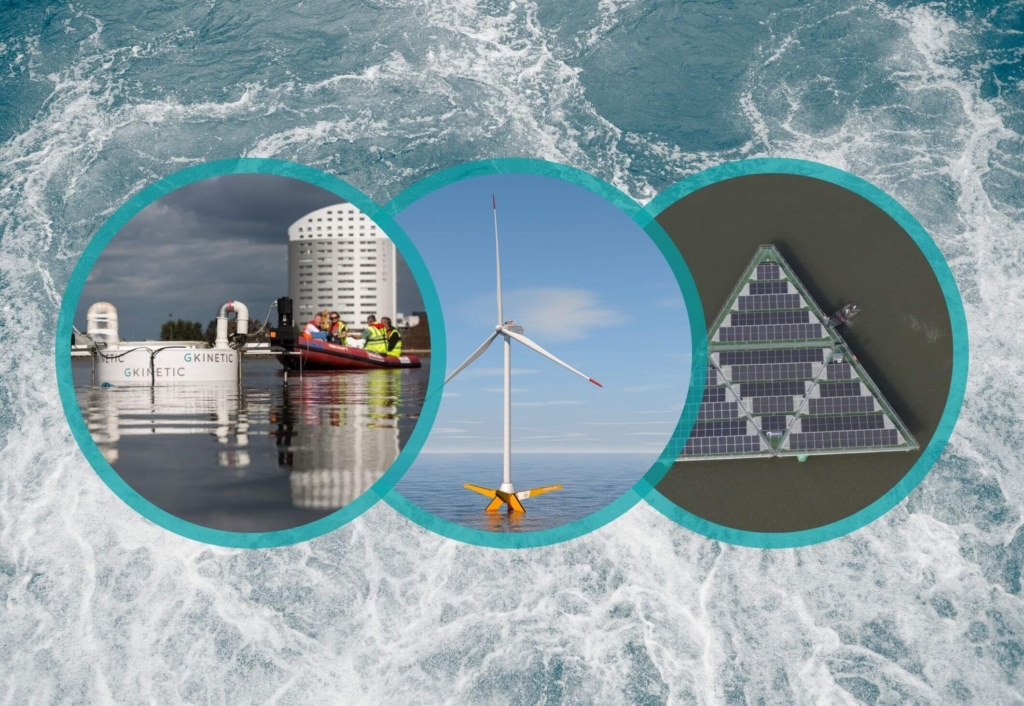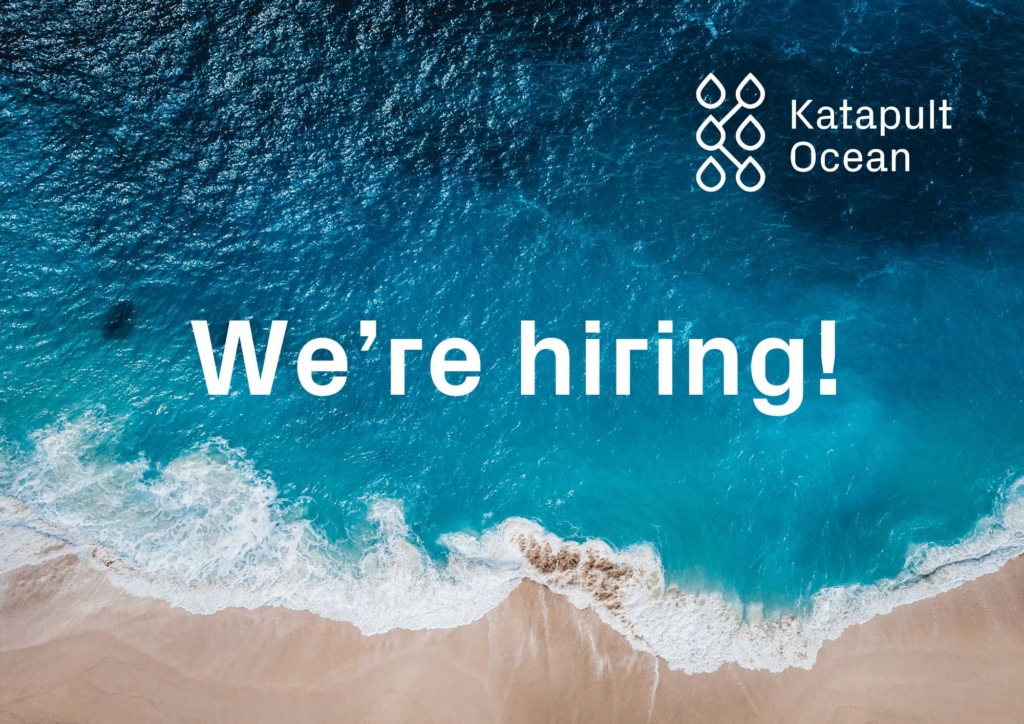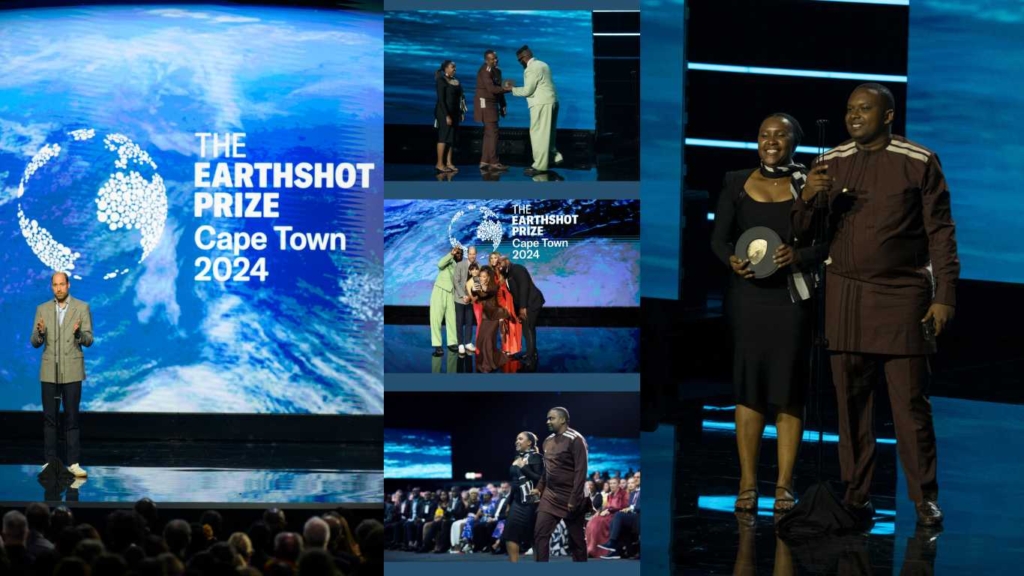Blue World Perspective: An Ocean of Opportunities for Clean Energy Production

Last month Katapult launched its latest edition of Blue World Perspective. The aim of the report is to highlight the vast opportunities presented by ocean resources, while simultaneously addressing the challenges our ocean is currently facing, as well as highlighting potential solutions. In this article, we explore the trends, challenges and opportunities associated with ocean clean energy production. We are also proud to showcase 3 Katapult Portfolio Companies: Solar Duck, GKinetic and Gazelle Wind Power, who are making a strong impact in the space of clean energy production. Don’t forget to download your full copy of BWP, here.
Energy production today heavily relies on fossil fuels. To stop climate change, we have to make a shift towards cleaner energy production, and the shift must come fast. New technology and investment into clean energy are essential to limit global warming as the cost of action to prevent climate change is probably far less than the cost of managing its effects.
From an investment perspective there are significant economic opportunities flowing from the low-carbon transition; renewable energy sources such as solar and wind energy are predicted to grow steeply over the next 20-30 years, and as land areas are scarce, we must seize the opportunities within the ocean in a sustainable manner.
One challenge with ocean energy has previously been the costs, but the field is evolving, and today offshore wind produces clean electricity at a competitive price. According to the International Energy Agency (IEA), the energy sector is responsible for almost three-quarters of the greenhouse gas emissions that have already pushed global average temperatures 1.1 °C higher since the pre-industrial age resulting in clear impacts on weather and climate extremes. To limit global warming to 1.5 °C, we need more clean energy.
In 2021, the electricity produced from renewable sources grew by 6%, but that was not enough to keep up with rising demand. Unfortunately, much of the gap was filled by coal-based energy generation, which grew by 9% to reach a new all-time peak. In a zero-emissions society, more than half of our energy must be electric, and of the electricity 86% must come from wind and solar energy according to DNV’s report Pathway to Net-Zero Emissions.
Luckily, things are moving. According to the Sustainable Development Goal Report 2021, there has been an increase in the production of renewable energy over the last few years. Still, effective climate action will require accelerated development of modern renewable energy.
Solar photovoltaic and wind power are already the cheapest sources of new power almost everywhere, and within a decade it will also be cheaper than thermal power in most places. In their Energy Transition Outlook 2021 report, DNV Predicts that by 2050, solar and wind will represent 69% of grid-connected power generation, and fossil power just 13%. Connectivity, storage and demand-response will be critical assets in the decarbonized power system. In addition to a change in the energy composition from non-renewable to renewable, DNV forecasts that we will see an improvement in energy efficiency, which is central to the global goal of reducing greenhouse gas emissions.
Most of the world’s population lives within 100 km of the ocean, meaning that the potential market for near-shore and offshore energy generation is enormous. The ocean is an underdeveloped arena for clean energy production, but the market is evolving quickly towards more ocean-based solutions, and production costs are decreasing. We see a growing number of startups that are driving innovation in the ocean energy field.
Over the last year, ocean wind farms have been developed off the coasts of the US and of Scotland, and more projects are in the pipeline. The ScotWind projects alone are predicted to produce 10 GW of new clean energy and more than 53 countries around the world have developed or are developing ocean wind projects.
Ocean solar power is also evolving, and countries where land is scarce are leading its development. In addition, wave and tidal energy are sectors where we see a promising development. Like in the Ocean Health-sector, to speed up the development of the ocean energy sector we are dependent on Governments, businesses, investors, science and startups doing their parts to move the sector forward.
Powering the world with clean energy: SolarDuck, GKinetic and Gazelle Wind Power
Solar Duck
SolarDuck, a spin-off from Damen Shipyards in the Netherlands, is developing offshore floating solar panels to produce clean solar energy where land is scarce. The solution is scalable to match specific local requirements and offers a sustainable alternative to meet the rising demand for clean energy.
SolarDuck’s technology is designed for offshore application, and it is therefore robust, able to handle high waves and wind speeds. The founders of SolarDuck have experience in the offshore energy industry and use their knowledge in the development of this clean energy solution. Their technology consists of flexible connected triangles that are resistant to waves up to five metres high, hurricane proof and have a lifetime up to 30 years.
SolarDuck seeks to maximize their environmental impact producing clean energy while being aware of the risks and ensuring marine life safety. To have a minimal impact on ocean ecosystems, the solar panel plants have been designed to minimize air and sunlight blockage by having elevated systems that allow for air transmission and open gratings that allow for sunlight transmission below the platform. SolarDuck’s first full scale demonstrator started generating energy in 2021.
GKinetic
GKinetic has developed hydrokinetic technology that allows for the generation of power from low flow speeds of 1-2mps. The first market-ready unit, a 12kW device is ideally suited for distributed energy applications and can be deployed in floating arrays or fixed to existing infrastructure such as canal walls or bridge pillars.
GKinetic’s hydrokinetic technology has the ability to provide an additional 200GW of zero carbon, clean and affordable energy globally. GKinetic’s installations also mitigate the associated damages of hydrokinetic power on the environment. It’s simple floating design avoids the need to disrupt channels and marine ecosystems.
Co-founder Roisin Mc Cormack, says, “Hydrokinetic energy is amazing because it is completely predictable and free-flowing. Our turbines have been designed to be as simple and rugged as a boat, simply dropped into rivers, canals and estuaries and instantly begin generating clean energy where it is needed most. We have something really special with our design that can unlock this incredible resource and have many positive impacts for our planet”
Gazelle Wind Power
Gazelle delivers a novel deepwater offshore wind platform designed by leading expert Naval Engineers that surmounts the current barriers of buoyancy, stability, and geographic limitations, all while dramatically reducing costs and preserving fragile marine environments.
Enabling a lower cost production of emission free electricity in deepwater sites while using a fraction of the materials used in current designs. Additionally, all major parts are designed to be recycled and the concrete components are finished with ECOncrete, which allows the creation of marine life on its surface.
Gazelle’s Founder, Jon Salazar says, “The Global Wind Energy Council forecasts the floating offshore wind market will reach full commercialization by 2030 with the expected generation of 6.2 GW of floating offshore wind. Our platform supports this growth while reducing costs and installation times. With this rapid progress within the sector, Gazelle is uniquely positioned to be a global leader in wind energy.”
Learn more about Katapult’s high impact portfolio companies, here.

